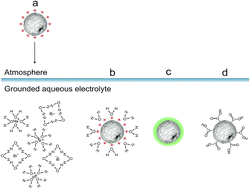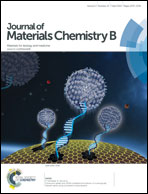Electrospray induced surface activation of polystyrene microbeads for diagnostic applications
Abstract
Electrospray is generally regarded as a “soft” technique due to the absence of any observable molecular fragmentation or destruction. This study reports on a novel and easy way to induce surface activation on the surface of polystyrene microbeads through electrospray deposition into a grounded aqueous electrolyte solution bath. This process, nicknamed EISA, which stands for electrospray induced surface activation, proposes that when a highly charged microbead formed by the electrospray process sinks into the aqueous electrolyte solution, it behaves like a highly charged spherical capacitor that discharges in the conductive liquid. The energy released leads to a breakup of the polystyrene surface bonds and water oxidation with oxygen. Further reactions produce a carboxylated surface that was confirmed by X-ray photoelectron spectroscopy (XPS) and protein coupling. An immunoassay based on these modified microbeads was also developed and presented for use in syphilis detection, demonstrating a reliable signal-to-noise ratio between positive and negative results.



 Please wait while we load your content...
Please wait while we load your content...